- Home
- Patrick Robinson
The Lion of Sabray Page 7
The Lion of Sabray Read online
Page 7
Massoud was a devout Muslim, and none of us approves of innocent citizens being killed. I say “none”—except for a very few who embrace a kind of lawless terrorism which is not only foreign to Pashtuns but is offensive in the extreme.
We all understood from the radio broadcasts that the USA president was absolutely furious that his nation had been attacked in this way.
But despite constant alerts that the US was preparing some terrible vengeance against someone, it never once occurred to us that our American friends and allies would be angry with us as a nation. Had not the mujahideen and the United States stood shoulder to shoulder against the Soviets in the 1980s?
But as weeks went by, the mountain Pashtuns were surprised at the number of US fighter jets flying overhead—with the main question being, why Afghanistan? There’s nothing here for the United States, except this half-crazed Arab killer hiding in some of the most remote mountain strongholds.
Of course, they knew bin Laden was up there, and they’d heard about his training camps for terrorists. But the White Mountain range, where he was believed to be in hiding, was a long and arduous climb even for Pashtun mountain men, and no one particularly cared to meet this deranged foreign cleric who appeared to have started World War III.
The White Mountain range forms a natural border between Afghanistan and Pakistan. In that part of the frontier, where the Khyber Pass cuts through, the peaks are more than fifteen thousand feet above sea level, a snowbound wall that towers above the surrounding hills.
The people understood that bin Laden lived somewhere up there—according to rumors, in a deep complex of caves and tunnels. And from where they stood, it was fairly obvious the Americans agreed. For about three weeks, they saw the US warplanes streaking across the mountains above, and then on October 7, twenty-six days after the 9/11 attack, the bombing began.
They occasionally heard the US onslaught echoing back across these remote and empty mountains, but it did not sound like the end of the world. It seemed controlled and contained, and they grew used to the explosions all through the long autumn days before the snows once more buried great swathes of the land and winter arrived.
December came, and there was increasing news of President Bush’s war on terrorism. Everyone knew there were terrorists in the mountains, but it still seemed very separate from the Afghan nation. This bunch of wild men hiding in the White Mountains could not, after all, have knocked down the World Trade Center, although it did seem they were getting the blame for it.
Even Sheik bin Laden, whose photographs showed him always walking with a long stick, seemed an unlikely terrorist, though he was identified on radio as the mastermind and planner behind the attacks. Those who actually carried out the plot were plainly dead.
But in early December, the Americans began a thunderous aerial bombardment over a cave-riddled section of the White Mountains known as Tora Bora, an ancient tribal headquarters for Pashtuns at war. That was the bin Laden hideout, surrounded by several hundred of his followers.
By this time, the United States was preparing to move an army of Special Forces up there and take on Al Qaeda head-on. But first there was the bombing. In the course of the next three days, US bombers were reputed to have dropped seven hundred thousand pounds of ordnance on the mountain, with each B-52 carrying twenty five-hundred-pounders.
This was around-the-clock bombing, presumably on the basis that if you destroy every last inch of the terrain, you’re bound to get the cleric. And to make doubly sure, the Americans dropped an enormous BLU-82 “Daisy Cutter,” a fifteen-thousand-pound bomb that had been used in the 1991 Gulf War to clear minefields.
When that thing hit, it shuddered the mountains like an earthquake. And the United States followed it in with a new armada of B-52s dropping dozens more five-hundred-pounders. Almost all Afghan accounts confirm that bin Laden’s trench had been destroyed.
No one who was anywhere near the Hindu Kush could have missed that onslaught. Gulab says it changed the landscape, altered the shape of the White Mountains, blew up entire mountaintops, and filled in crevasses and valleys. Mountain men said that certain areas were no longer recognizable.
But the chilling suspicion was that bin Laden had escaped, despite those bombs blasting percussion shocks throughout the cave and tunnels.
Hundreds had died, but there was no body and no sign of the sheik.
Every Al Qaeda prisoner swore to God he’d made it out sometime before those BLU-82s ripped the landscape asunder. And there might have been seven of them.
The United States swore to take him—dead or alive.
- 3 -
COULD ANYONE STILL BE ALIVE?
All through the dark winter months of December, January, and February, it was obvious that the anger of the United States could not be stilled. The tribesmen, huddled around iron stoves while snow fell constantly over the high slopes and the winds howled relentlessly through leafless trees, heard the BBC World Service announce that the Americans were not satisfied with the near-total decimation of the White Mountains and would not be satisfied until they saw the dead body of Sheik Osama bin Laden.
The only sound that awakened the silent winter hillsides of the Hindu Kush was the shattering scream of US fighter aircraft racing overhead, still heading up to Tora Bora and the high passes through which Osama and his henchmen had almost certainly fled.
And yet, throughout all of this overhead mayhem, America seemed not to wish the local people any harm. No pilot ever dropped a bomb on them or anyone who lived anywhere near. There was no strafing, no instructions, no demands, no communiqués.
The US military was just conducting its regular business in pursuit of this foreigner who had, with no invitation, parked himself and his followers in one of the most secret Pashtun strongholds, up on the highest border with Pakistan.
Almost five months after 9/11, no evidence whatsoever had linked the terrorist attacks with the tribes from the northeast. The United States had literally flung the Taliban out of office in November when they retook Kabul, with their own forces fighting alongside the late Commander Massoud’s Northern Alliance, plus a coalition of British and Canadian forces.
There was a new American-backed government in Kabul. But the mood remained hostile, as US forces kept after bin Laden—on one famous occasion, angrily threatening “to bomb Pakistan back to the Stone Age if they continued to help him.”
It was all slightly uneasy, but not that bad in Kunar Province. No one much wanted to fight the northern Pashtuns, and a lot of people were glad to see the troublesome Taliban out of the way, encamped somewhere south of Kabul. Waiting.
But then the unthinkable happened. On a lonely mountain road, near Asadabad, an air-to-ground missile fired from a US fighter jet hit and obliterated a white station wagon. The driver, his wife, and two children were all local. All Pashtuns. And they were all dead. And no one could understand why it had happened.
Whether or not the missile had killed them was a topic of vast speculation. There were rumors that the missile had slammed the vehicle off the road, and then a US patrol, believing the occupants to be Al Qaeda informants, or even spies, had opened fire and mowed down all four of them in cold blood, just as if Osama himself had been behind the wheel.
Missile or machine gun fire? That was an interesting question, but essentially not relevant. The rocket and/or the bullets were strictly American. And locally there was absolute outrage. It should be recorded that this time of massive US bombing all over the country was generally being kept under wraps. Or that was the way it seemed.
No one appeared to know how many US troops were near Asadabad, but there were some two thousand US military on the ground in or close to Afghanistan at the time. These included a thousand men of the Tenth Mountain Division—climbers and specialists in battles over rough terrain—still stationed at the US K2 Base across the northern border in Uzbekistan.
Shocking things were happening around this time. Afghan villages were being wipe
d out, north, south, east, and west, as the United States military ruthlessly sought out stragglers and activists still operating on behalf of the Taliban and Al Qaeda. Every couple of weeks, the little local radios reported the most terrible atrocities. There were estimates as high as three thousand civilians, including women and children, being killed during this US nationwide onslaught against the Taliban and Al Qaeda.
Everyone understood that the first casualty of war is usually the truth. But it did seem to the canny mountain tribesmen, in the long months following the 9/11 attacks, that the Americans were determined to nail anyone even associated with either terrorist organization. These activists would somehow be shot, bombed, or otherwise removed, with little regard for the “collateral damage”: innocent people being killed in the cross fire.
The Pentagon policy, as relayed to the Afghan people, seemed to be “shoot or bomb first,” however dubious the sources or information. Targets included cars and buses with unknown passengers. The aerial bombing took out probably hundreds of villages, from the White Mountains to the deep south of the country—based on reports of Al Qaeda or Taliban presence.
Everything seemed slightly remote from the Sabray area, and all of the information was second- or thirdhand—until the white station wagon. That stark and terrible incident was local. The occupants of that car were a completely innocent family known to many neighboring communities. None of the four had even the slightest connection to the Taliban.
News of the calamity spread rapidly across the mountains. It was a huge issue. Tribal councils were held, the elders conferred, village to village, and their leaders demanded explanations and apologies from the Americans. Gulab remembers the time well:
The sound of the mullah’s call to prayers in the days immediately following the murders had a strange, mournful quality, and it resounded around the village. There were many sad faces during those days, and evenings, when we asked Allah to shine His light upon the souls of the four victims.
All of our dealings with the Americans were slow. At first, there were denials and evasions, and then they did finally apologize. But it was too late. Far, far too late. The mujahideen commanders had held a series of councils and considered the three Pashtunwali principles the American action had offended.
First there was number three, badal, or justice: the obligation to seek justice or take revenge against the wrongdoer. This carried no time limit. The insult can only be redressed by the shedding of the miscreant’s blood. Badal often results in a blood feud lasting generations.
And then there was number four, tureh, or bravery—all Pashtuns being obliged to defend family and possessions against tyranny. Death must follow if anyone offends this principle.
Number ten was simply nang, or honor, and this stresses that all Pashtuns must defend the weak around them. Which included, of course, the four slain villagers in the burning car.
In a hundred tribal councils, all over the northern mountains, the Americans were found in breach of our sacred principles—reluctantly by the elders, since the USA was still our trusted friend and ally. Even more reluctantly, since they had stood with us in our battle to expel the Soviets.
Nonetheless, they were in breach. And the Afghani commanders, including my own brother, stood up and swore the ancient tribal oaths and vows. In those dark winter mountains, the mujahideen once more declared jihad against an occupying army: a former friend who had transgressed and appeared not to mind doing so again.
Holy war against the all-powerful USA was not an easy decision. But Pashtunwali does not seek what’s easy. It seeks what’s right. And our former brothers from the United States had overstepped our line of demarcation.
And the mujahideen cry of “Revenge!” echoed around our hills. “Death to the infidel!” We were at war with the United States of America.
Mujahideen commanders understood that to start recruiting and then to attack the forces of the United States of America was little more than a declaration of mass suicide. They knew beyond doubt that the Americans could wipe Afghanistan off the map at the touch of a button; furthermore, many of the mujahideen had been mostly inactive since the Russians left twelve years before.
They were simply not ready to fight a war against anyone, never mind against the United States. And despite many misgivings about the ruthless Taliban army, that was really the only trained fighting force Afghanistan had.
Every Pashtun village had its own private arsenal, with weapons stacked and stored after they’d been stolen from the Russians. But the hurt from that careless US attack on that local station wagon would not go away. And the village elders were calling the Taliban commanders and handing over their guns and ammunition, AK-47s, and rockets.
Everything was presented to the disliked fundamentalist army despite all the concerns about the Taliban’s methods and radical interpretations of the Koran. The Taliban had long and powerful links to all of the villages, and the little clusters of houses, mosques, and pastures in the Hindu Kush made up a prime recruiting ground for the Taliban.
They would arrive at regular intervals and ask to speak to the young men, inspiring them with tales of great victories on the battlefield. And they stressed that Allah regarded them as the chosen people, and that He would protect them. In the event of death, they would be summoned into the Arms of Allah and cross the bridge into paradise, to the sound of the heavenly trumpets. Many virgins would await them.
Which probably sounded quite tempting to the new teenage recruits. Many of them accepted Taliban training and went with their new commanders to fight a foreign foe. All of this had a polarizing effect on village populations: there were families whose sons had gone to join the army, and others who did not approve of that army, its leadership, and its harsh and medieval intentions.
They certainly did not condone the presence somewhere in the mountain heights of the most wanted man on earth, Sheik bin Laden, gazing reproachfully at this nation while he provided the outlawed army of Taliban fighters with both Saudi cash and encouragement.
The Taliban had enemies not only within the villages but also in the cities and rural areas where they had, while in power, burned vast areas of fertile land and then withheld food supplies sent by the United Nations. The years of Taliban rule had been cruel and extreme, using terrorism to further their ideological and political intentions.
In so many ways, it was America that had liberated the country from this form of national tyranny. And yet the specter of the white station wagon hung over them all. Now the villages were at war with their once-trusted ally, and people like Gulab understood that they might be obliged to pick up the machine guns once more and begin the long road into the hills to try to ambush and kill the occupying foreigners. And they understood this would be a lot more complicated than fighting the Russians.
By now, the Lion of Sabray was twenty-eight years old, a veteran commander and gunnery officer, requiring no further training. People would always look to Gulab and his elder brother for solutions to the American problem.
However, the United States was a lot more elusive, and the mujahideen concentrated on guerrilla actions, seeking out US patrols in high hills, never taking them on in close combat. The Americans were so well armed, trained, and equipped, racing above the land in helicopters and warplanes, and relying on their smart bombs and missiles to do their damage.
The mujahideen stuck to subtle lightning attacks, watching for US helicopter troop landings, lying in wait for the disembark. If the US troops were not blown out of the sky with the remaining US-built Stinger missiles, the mujahideen would open fire as soon as American boots touched the ground. The Afghan rebels’ task was to make their lands once more the most dangerous place on earth for any intruder.
Even almost four years after 9/11, there was still a polarization among the Pashtun people about the structure of this strange war. For some, especially those who had fought so hard against the Russians, the vision of that deep and friendly relationship with the United State
s was still in place. Congressman Charlie Wilson was a lot more popular than bin Laden.
But the apparition of that burning white station wagon remained.
Afghanis could not understand why the Americans had done this. They could not even understand why America was interested in Afghanistan. And the bombing of Tora Bora had scared them, because they thought they might be next.
They’d tried to believe that the good-hearted United States of America never wished to kill innocents. Then, quite suddenly, with that attack on local people, everything changed. But, curiously, they still could not raise the same venom for the Americans as they had for the Russians.
They had to accept that the United States had turned against them, but it was in a spirit of sadness rather than fury. Although the mujahideen leaders tried constantly to whip everyone into a frenzy, rekindling the hatreds of war, they were only partially successful.
The Taliban remained unpopular in many sections of the community. At first, they had been full of promise with their devout views on the Koran, but once in power, they had swiftly alienated half the population.
They’d infuriated people in the Hindu Kush by imposing a tax on profits in the timber business, collecting it ruthlessly. And they were worse in the cities, shooting and bombing Americans, with apparent disregard for the many, many Afghani citizens who were hit and killed in the cross fire.
For Gulab, the American war did not represent a call to arms, though Sabray was ready. He stayed busy in the timber business, earning a living and hoping that the United States would decide to leave, since Sheik bin Laden was plainly no longer a resident on the Afghani side of the Pakistan border.
He remembers well the night of June 27, when he awoke to the sound of what seemed to be a helicopter in the near distance:
I do not think military commanders from any war, no matter how distant, ever sleep quite so long and peacefully as civilian citizens. Definitely I don’t. Somehow, deep in my subconscious, I hear again the murmur of the battlefield and the terrible anger of the guns.

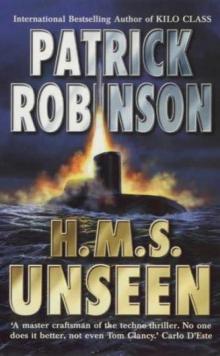 H.M.S. Unseen am-3
H.M.S. Unseen am-3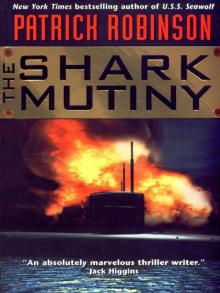 The Shark Mutiny (2001)
The Shark Mutiny (2001)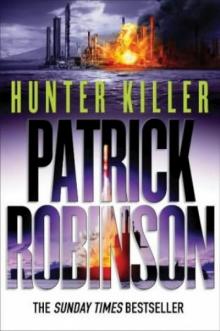 Hunter Killer am-8
Hunter Killer am-8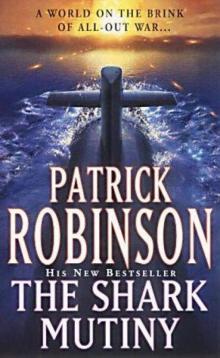 The Shark Mutiny am-5
The Shark Mutiny am-5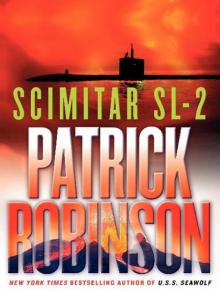 Scimitar SL-2
Scimitar SL-2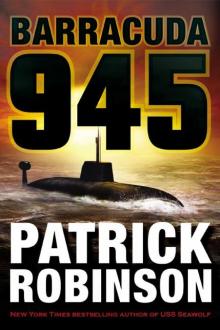 Barracuda 945 am-6
Barracuda 945 am-6 Hunter Killer
Hunter Killer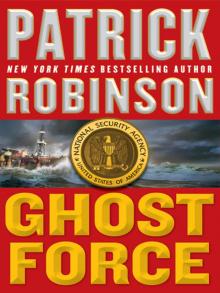 Ghost Force
Ghost Force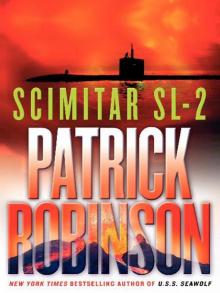 Scimitar SL-2 (2004)
Scimitar SL-2 (2004) Kilo Class am-2
Kilo Class am-2 The Lion of Sabray
The Lion of Sabray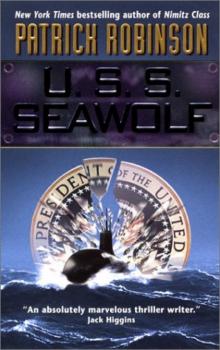 U.S.S. Seawolf am-4
U.S.S. Seawolf am-4 Ghost Force am-9
Ghost Force am-9 To the Death am-10
To the Death am-10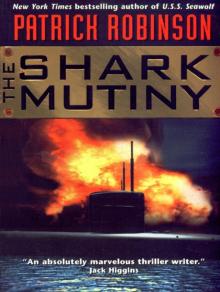 The Shark Mutiny
The Shark Mutiny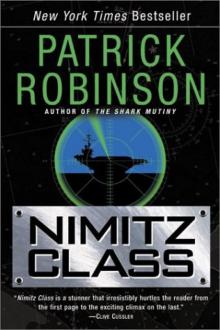 Nimitz Class am-1
Nimitz Class am-1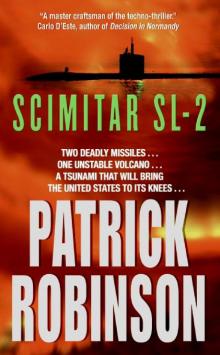 Scimitar SL-2 am-7
Scimitar SL-2 am-7 Barracuda 945
Barracuda 945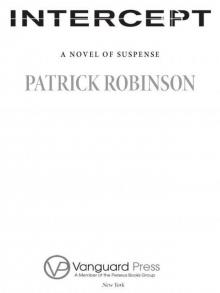 Intercept
Intercept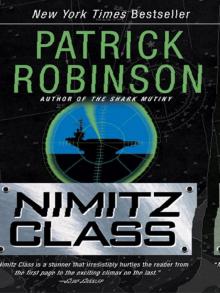 Nimitz Class (1997)
Nimitz Class (1997) Kilo Class
Kilo Class Kilo Class (1998)
Kilo Class (1998) Diamondhead
Diamondhead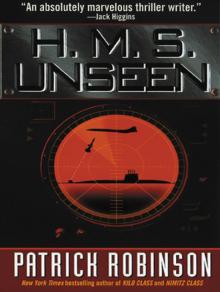 H.M.S. Unseen
H.M.S. Unseen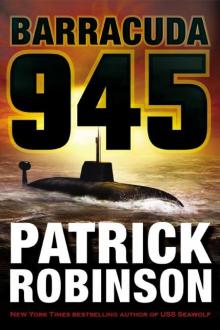 Barracuda 945 (2003)
Barracuda 945 (2003)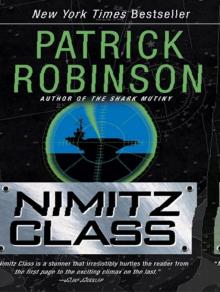 Nimitz Class
Nimitz Class The Delta Solution
The Delta Solution U.S.S. Seawolf
U.S.S. Seawolf